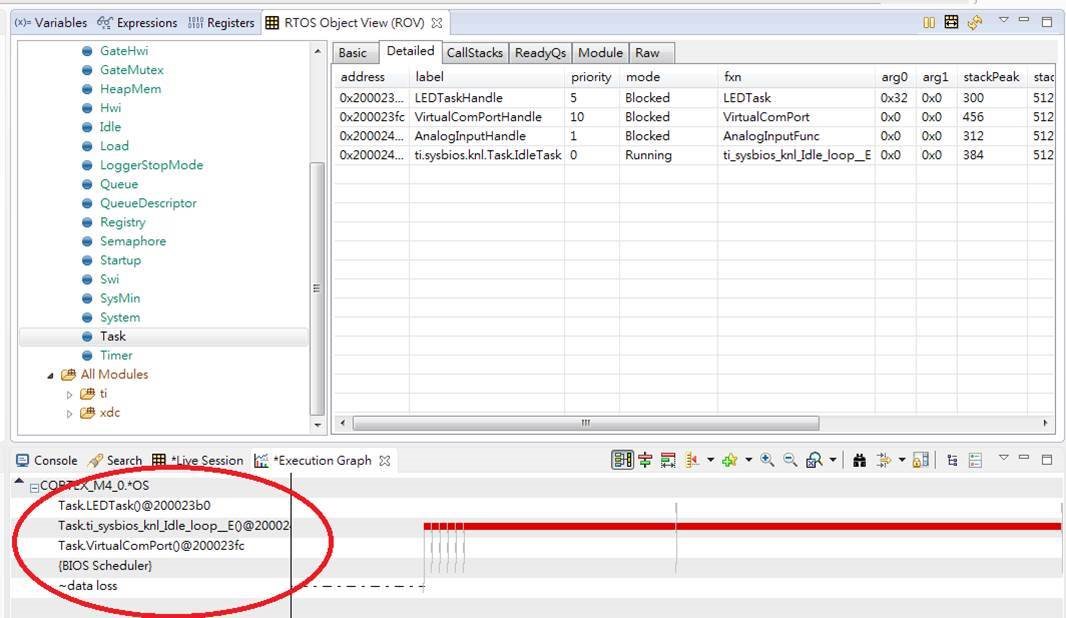Other Parts Discussed in Thread: SYSBIOS
Tool/software: TI-RTOS
Hi Champs,
My customer has question about "exclusive size" and " inclusive sizes". Could you please tell me what do "exclusive sizes" and "inclusive sizes" mean?
Also they found the stack peak size is too big. Is there any way to reduce it ? please see below picture for stack peak size. It is RTOS ObjecView stackPeak:task0Fun 268.
when I try to enable execution graph, it showed that missed UIA. Could you please tell me where I can set UIA ? I use pwmled_EK_TM4C1294XL_TI_TivaTM4C1294NCPDT project.
Could you please tell me is there any document/link to teach how to use stack usage and ROV?
Thanks for your reply in advance




